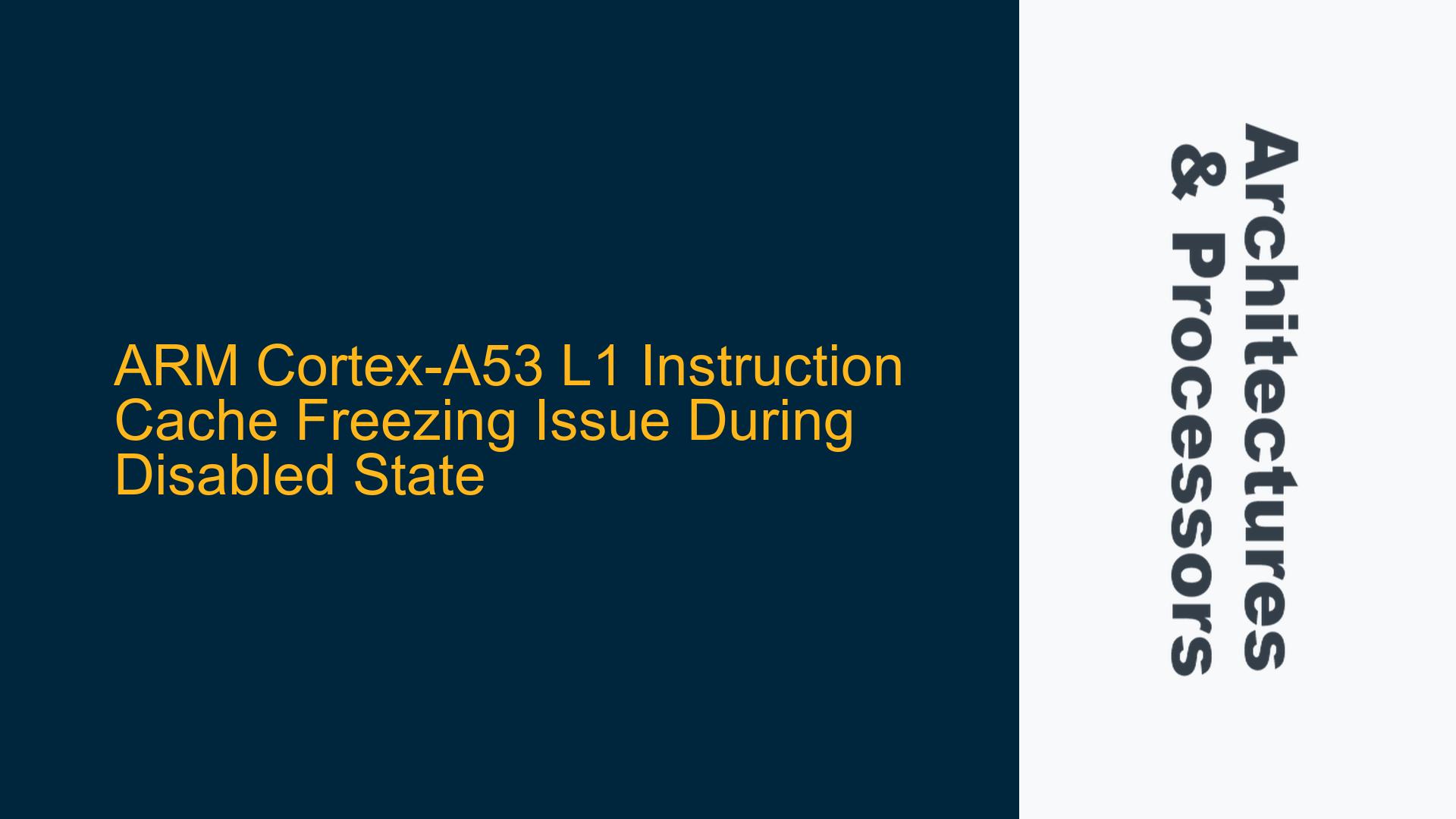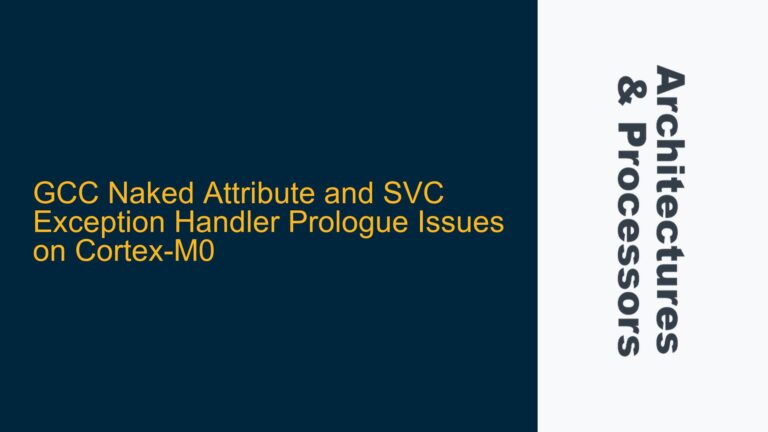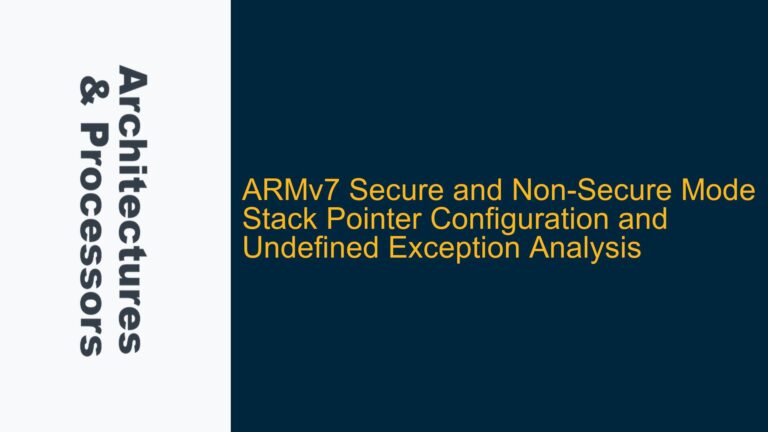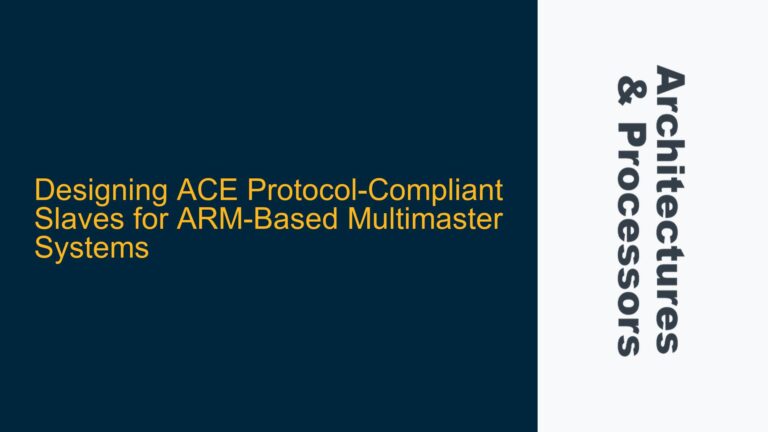Cortex-A53 L1 Instruction Cache Behavior During Disabled State
The Cortex-A53 processor, a widely used ARMv8-A architecture core, features separate L1 instruction and data caches. The L1 instruction cache is designed to store recently fetched instructions to reduce latency and improve performance. However, when the instruction cache is disabled, its behavior is not as straightforward as one might assume. Disabling the instruction cache does not guarantee that its contents will remain unchanged or "frozen." This behavior is particularly relevant when attempting to access or manipulate the cache contents directly, as in the case of debugging or low-level system optimization.
The Cortex-A53 Technical Reference Manual (TRM) specifies that disabling the instruction cache prevents new instruction fetches from triggering cache lookups or allocations. However, the cache may still be used for internal buffering, particularly by the pre-decoder. This internal buffering can lead to changes in the cache contents even when the cache is disabled. This behavior is not explicitly documented in the TRM, leading to confusion and unexpected results when developers attempt to freeze the cache contents.
The issue arises when developers expect the cache contents to remain static after disabling the cache. For example, a developer might disable the cache, read its contents into an array, and then compare the array with the cache contents at a later time. If the cache contents have changed, the comparison will fail, leading to incorrect assumptions about the system’s behavior. This discrepancy is particularly problematic in scenarios where precise control over the cache state is required, such as in real-time systems or during low-level debugging.
Pre-Decoder Internal Buffering and Cache State Changes
The primary cause of the observed behavior is the Cortex-A53’s pre-decoder, which continues to use the instruction cache for internal buffering even when the cache is disabled. The pre-decoder is responsible for decoding instructions before they are executed, and it uses the instruction cache as a temporary storage area. This usage is not affected by the cache disable state, meaning that the cache contents can still be modified by the pre-decoder even when the cache is ostensibly disabled.
Another potential cause is the interaction between the cache and other system components, such as the memory management unit (MMU) or the bus interface unit (BIU). These components may still access the cache for various reasons, such as prefetching or speculative execution, even when the cache is disabled. These accesses can lead to changes in the cache contents, further complicating the issue.
Additionally, the Cortex-A53’s cache maintenance operations, such as invalidations or clean operations, can also affect the cache state. While the original issue description states that no explicit cache maintenance operations are being performed, it is possible that implicit operations are occurring due to system activity or other factors. These implicit operations can lead to changes in the cache contents, even when the cache is disabled.
Implementing Cache State Freezing and Ensuring Consistent Cache Contents
To address the issue of changing cache contents when the instruction cache is disabled, several steps can be taken. First, it is important to understand that disabling the instruction cache does not freeze its contents. Instead, developers should consider alternative approaches to achieve the desired behavior.
One approach is to use cache lockdown techniques, which allow specific cache lines to be locked in place, preventing them from being evicted or modified. The Cortex-A53 supports cache lockdown through the use of the Cache Lockdown Register (CLD). By locking specific cache lines, developers can ensure that their contents remain unchanged, even if the cache is otherwise active. This approach requires careful management of the cache lockdown registers and may not be suitable for all use cases.
Another approach is to use cache maintenance operations to explicitly control the cache state. For example, developers can use the Data Cache Clean and Invalidate by Set/Way (DC CISW) operation to clean and invalidate specific cache lines before disabling the cache. This ensures that the cache contents are in a known state before the cache is disabled, reducing the likelihood of unexpected changes. However, this approach requires precise timing and coordination to avoid race conditions or other issues.
In cases where the cache contents must be frozen for an extended period, developers may consider using a combination of cache lockdown and cache maintenance operations. For example, specific cache lines can be locked, and the cache can be cleaned and invalidated before being disabled. This approach provides a high degree of control over the cache state but requires careful implementation to avoid performance degradation or other issues.
Finally, developers should consider the impact of system-level factors, such as the MMU or BIU, on the cache state. These components can affect the cache state even when the cache is disabled, so it is important to account for their behavior when designing systems that require precise control over the cache state. This may involve configuring the MMU or BIU to minimize their impact on the cache or using additional techniques, such as memory barriers, to ensure consistent behavior.
In conclusion, the Cortex-A53’s L1 instruction cache does not freeze its contents when disabled, due to internal buffering by the pre-decoder and other system components. Developers seeking to freeze the cache contents should consider using cache lockdown techniques, cache maintenance operations, or a combination of both. Additionally, system-level factors should be taken into account to ensure consistent cache behavior. By understanding the underlying causes of the issue and implementing appropriate solutions, developers can achieve the desired control over the cache state in their systems.






